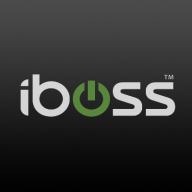


AWS IAM Identity Center and JumpCloud compete in the identity and access management category. Based on data comparisons, AWS IAM Identity Center offers superior security features, while JumpCloud provides better integration across cloud ecosystems.
Features: AWS IAM Identity Center is recognized for its granular role-based permissions, centralized management across AWS services, and integration capabilities. JumpCloud provides single sign-on, device management, and multi-platform integration, catering to environments using Office 365 and Google Workspace.
Room for Improvement: AWS IAM Identity Center users desire improved third-party tool integration and enhanced security policy visualization. Better session-level policies and user management flexibility are also requested. JumpCloud users wish for improved group synchronization with Microsoft 365, refined conditional access, and more supported integrations. Enhanced device management for non-Windows devices and a stronger API are also areas for development.
Ease of Deployment and Customer Service: AWS IAM Identity Center is valued for its comprehensive documentation, which simplifies deployment. It integrates across various cloud environments with reliable customer support. JumpCloud receives praise for straightforward documentation and easy application management, with customer service noted for being comprehensive and solution-oriented.
Pricing and ROI: AWS IAM Identity Center offers a cost-effective option with a free tier covering essential identity management features, though advanced functionalities may incur additional costs. It provides a high ROI through operational efficiencies and enhanced security. JumpCloud operates on a cost-per-user model, offering various tiers and modular functions. Although perceived as expensive, JumpCloud's flexible services contribute to reduced overhead and support costs, making it attractive for cloud-centered environments.



| Company Size | Count |
|---|---|
| Small Business | 6 |
| Midsize Enterprise | 6 |
| Large Enterprise | 5 |
| Company Size | Count |
|---|---|
| Small Business | 3 |
| Midsize Enterprise | 3 |
| Large Enterprise | 4 |
| Company Size | Count |
|---|---|
| Small Business | 13 |
| Midsize Enterprise | 2 |
| Large Enterprise | 3 |
iboss offers a comprehensive security platform designed for diverse use cases such as web filtering, data loss protection, corporate proxy services, and URL filtering.
iboss integrates advanced features to address dynamic security needs, leveraging its strength in SASE, ZTNA, AI initiatives, and cloud integration, while ensuring seamless operations for remote work. It excels in historical forensics, malware protection, and flexible cloud deployments. Users benefit from comprehensive traffic scanning, robust malware detection, and PaaS capabilities that reduce hardware management. An intuitive admin console ensures efficient management with content filtering and low false positives. SSL decryption enhances security, while DLP protects data in AI conversations. Deployment is rapid and scalable, allowing effortless integration with emerging technologies.
What features does iboss offer?
What benefits and ROI should users consider?
iboss finds significant application in sectors such as education, where web filtering for K-12 is crucial, and in corporate environments requiring robust proxy services and URL filtering for network security. Its adaptability is essential in scenarios demanding flexible, decentralized security frameworks, particularly for remote work setups.
AWS IAM Identity Center is the recommended service for managing your workforce's access to AWS applications or your multiple AWS accounts (or both). It is a flexible solution that can be used to connect your existing identity source or help you create users in AWS. IAM Identity Center can be used alongside your existing AWS account access configurations.
JumpCloud offers efficient device management, single sign-on, and integration capabilities. It integrates seamlessly with Microsoft 365 and Google Workspace, streamlining user management across diverse environments.
JumpCloud delivers device, user, and application management across platforms like Windows, Mac, Linux, and cloud services such as AWS and Azure. Acting as a cloud-based directory, it facilitates single sign-on and identity access management, making it an attractive replacement for Active Directory and LDAP directories. Its policy management and centralized directory simplify user and device administration, offering a user-friendly interface with flexible access control and remote management. Organizations can experience streamlined onboarding and offboarding processes, robust authentication, and scalability. Despite being powerful, room for improvement is noted in alert capabilities, comprehensive MDM for Windows, multi-tenant features, and API reliability.
What are the key features of JumpCloud?Companies across industries utilize JumpCloud for comprehensive management of devices and user identities. It is especially beneficial in technology-driven sectors where centralized directory services replace traditional Active Directory and LDAP models. Organizations employing platforms like AWS and Azure find it essential for maintaining efficient and secure access management.
We monitor all Single Sign-On (SSO) reviews to prevent fraudulent reviews and keep review quality high. We do not post reviews by company employees or direct competitors. We validate each review for authenticity via cross-reference with LinkedIn, and personal follow-up with the reviewer when necessary.